1. Birth of greek art: Historical Background & Painting
1/16
There's no tags or description
Looks like no tags are added yet.
Name | Mastery | Learn | Test | Matching | Spaced |
|---|
No study sessions yet.
17 Terms
Historical sketch:
when do the first greek speaking people enter greece?
mycenaean empire?
cause of mycenaean destruction
period of unrest in aegean
first greek speaking people (Proto Greek) enter Greece c. 2000 B.C. (end of early Bronze age)
Mycenaean empire: mainland greece, cycladic islands, crete, West Asia Minor
mycenaeans = homer’s achaeans
art influences by Minoans (non-greek speaking people) on Crete so called Aegean art
cause of the destruction of Mycenaean civilization
dorian invasions: legendary inhabitants of doris in central mainland greece invaded Peloponnese and occupy Mycenae, Tiryns, Pylos
Thucydides’ accounts (5th century BC): Dorians took over Peloponnese (1103 B.C), 80 years after fall of troy
recent thinking puts fall of Homer’s Troy (1250 B.C) and attributes this fall to decay from within and invading “sea-people” (disaffected or disposed Mycenaeans
Dorians and other Greek-Speaking people seem to occupy the Peloponnese between 1100- 1000 BC, end of bronze Age and start of Iron Age.
Period of unrest in Aegean (1150-800 B.C.) marked by migration of 3 major groups of Greek-speaking people: Aeolians, Ionians, Dorians
differing in dialect and social customs, but more or less shared a common language and literature, religious beliefs and festivals (still have hostilities)
period of unrest called “Dark Ages” or “Geometric period” (geometric patterns in art)
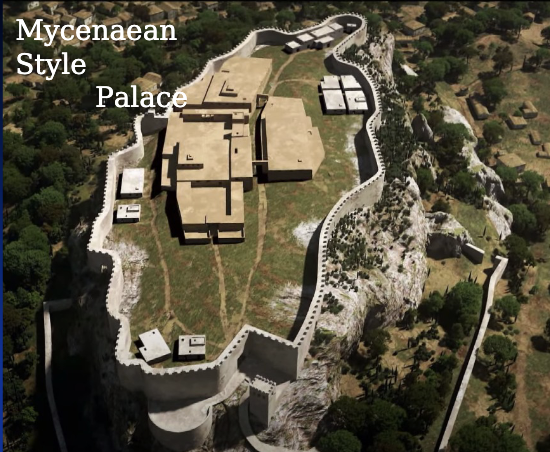
Acropolis of Athens (1600 BC): Mycenaean style palace complex.
built on steep, defensible hill
most prominent Ionian city of Attica
Kerameikos Cemetery & Dipylon Gate
Kerameikos: named after kerameis (potters that worked there)
Dipylon Gate: main western entrance to the city
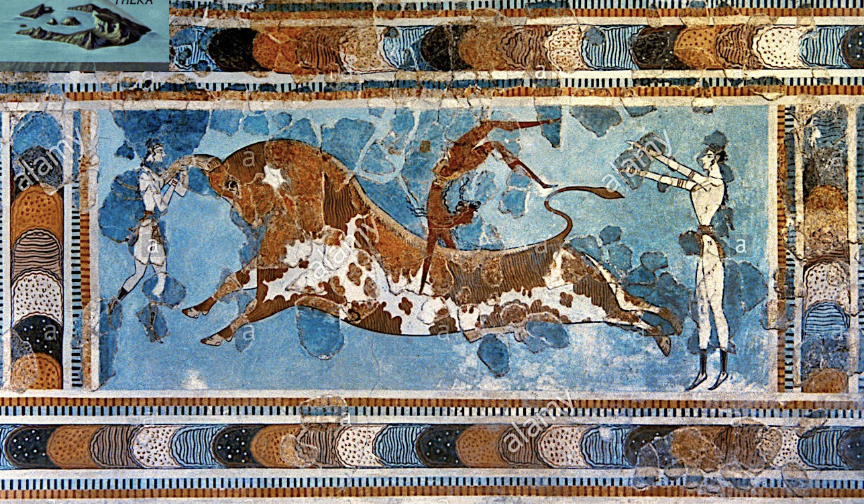
“Toreador Fresco” (Bull-Leaping Scene from Knossos (1500 BC)
Great Palace of Knossos, Crete
buon fresco: a painting done rapidly in watercolor on wet plaster on a wall or ceiling, so that the colors penetrate the plaster and become fixed as it dries
but this one painted on already dry surface (fresco secco), and a binding agent used to fix it to the wall
traditionally, red:male, white:female, but view has been challenged, colors used as a social marker
bulls position: “flying gallop”
profile bodies with frontal eyes: aegean stylistic choice
bull sacred animal in minoan culture: linked to fertility and power
Characteristics of Minoan Fresco Painting
liveliness of color
naturalism & movement
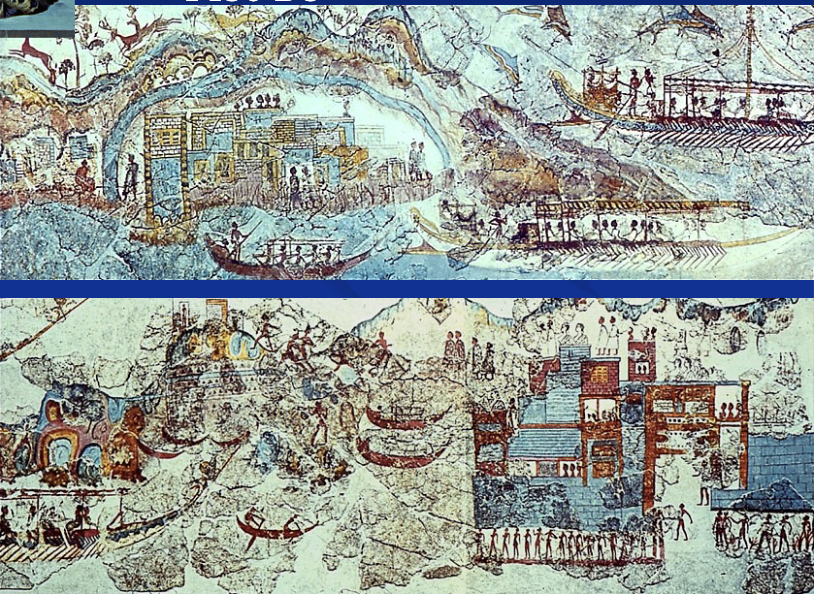
“Flotilla Fresco” from Thera, ca. 1450 BC
seaside landscape fresco from Cycladic island of Thera
evidence of minoan political control of influence over thera
chronology
early bronze age: 3000 - 2000
middle bronze age: 2000-1600
late bronze age: 1600-1000
sub-mycenaean: 1150-1000
geometric: 1000-700
proto-geometric:1000-900
mature geometric: 900-700
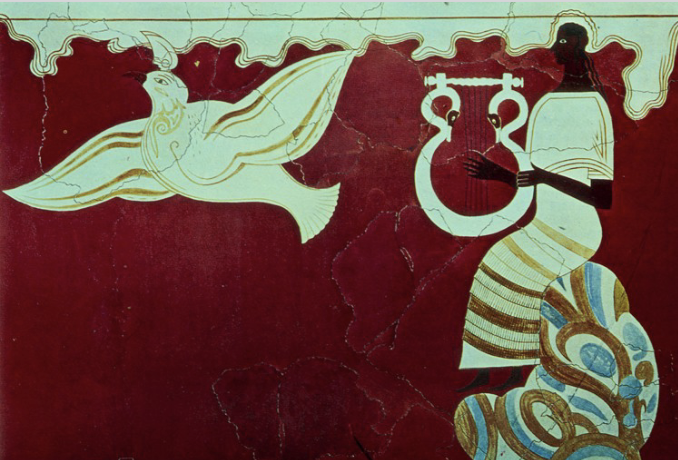
Mycenaean musician fresco (1300 BC) from Palace at Pylos in Western Peloponnese
male musician playing seven string lyre (kithara), clothes show elite status
use minoan fresco technique, but more formal, static mycenaean style
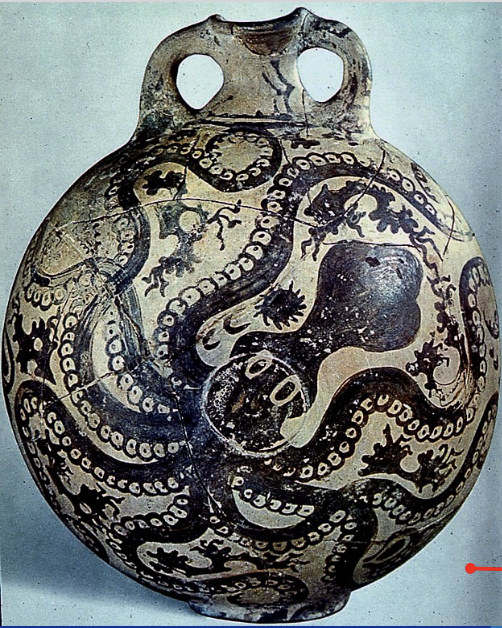
Minoan Octopus Vase From Knossos (1450 BC)
amphora = wine- storage vessel
painted in dark slip on a light background: minoan “marine style”
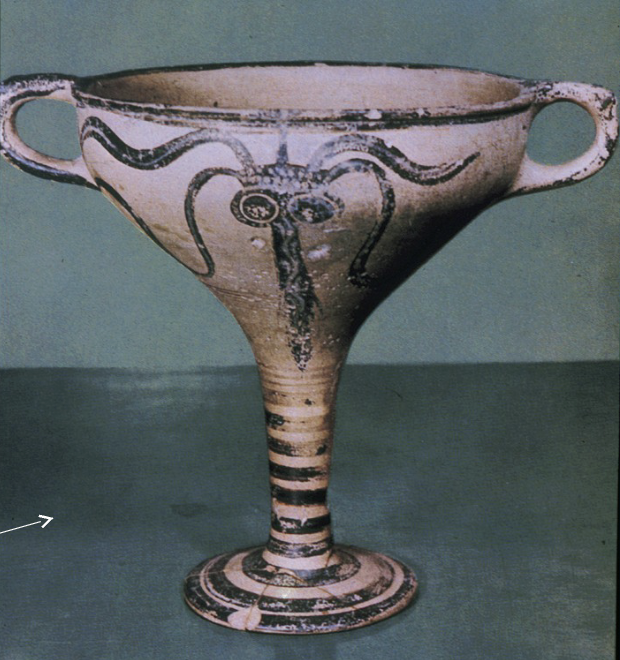
Octopus Chalice from Knossos (1400 B.C.)
kylix = chalice
high status ritual object
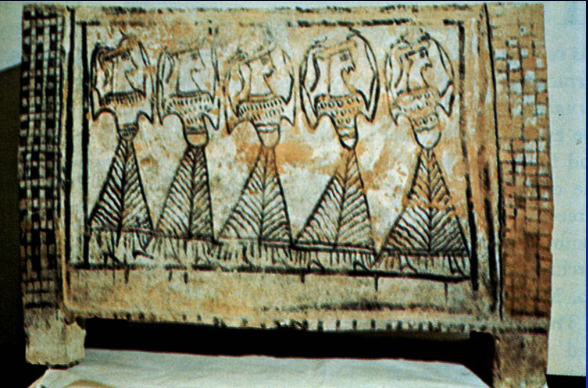
Mycenaean Larnax (small Sarcophagus) 1300 B.C.
stone coffin
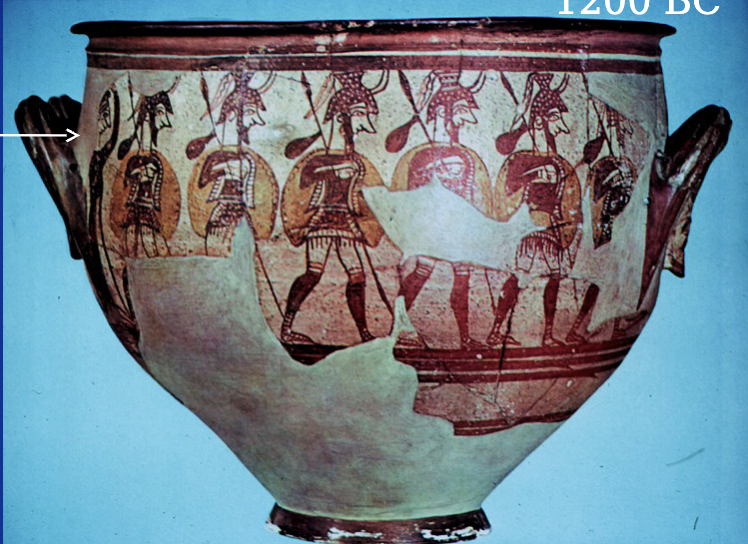
Mycenaean “Warrior Vase” (krater = bowl for mixing wine and water) from Acropolis of Mycenae (1200 BC)
Woman bidding farewell to soldiers
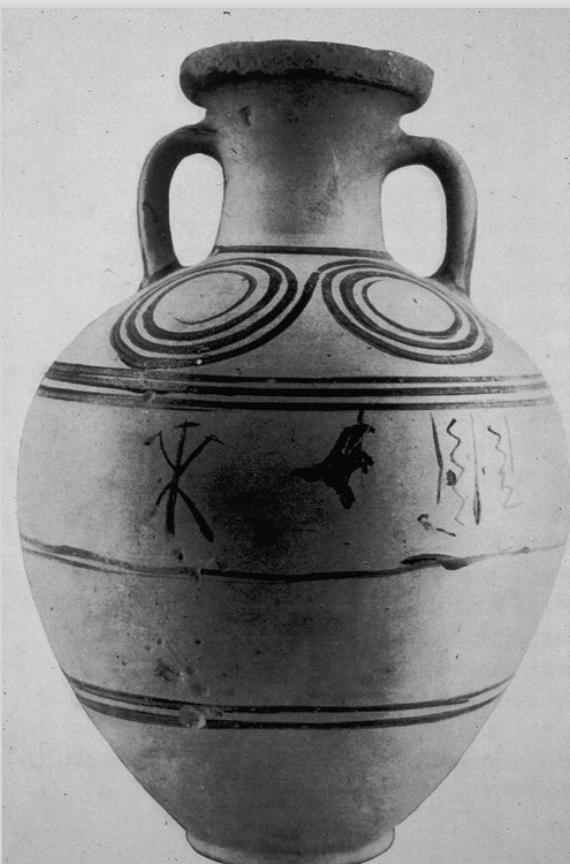
sub-mycenaean amphora from the Kerameikos: pot (1150 - 1000 BC)
transition from Mycenaean art to early greek geometric design
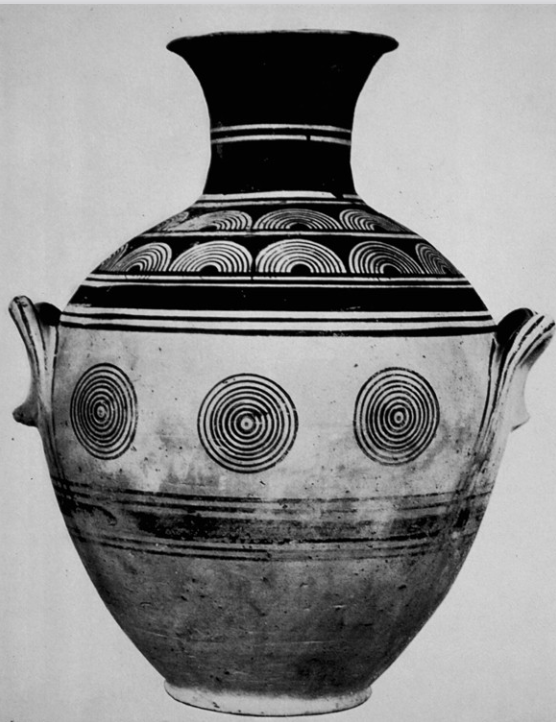
proto-geometric amphorae from the Kerameikos(1000 BC)
triglyph and metope frieze: architectural elements of the Doric order)
tectonic composition: composition which stresses horizontals and verticals
libation: drink offering
dentil: tooth-like decorative pattern
lare proto-geometric vase: more black areas on vessel
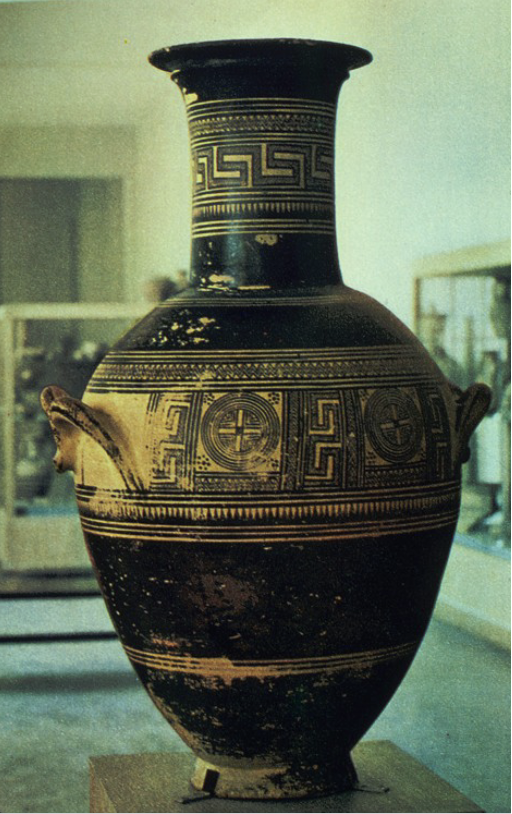
geometric amphora (900-850 BC)
amphorae for women’s grave, krater for men
covered with geometric decoration
prothesis: laying out the corpse on a bier (funary couch)
ekphora: transport of the dead to the cemetary
“horro vacui”: fear of empty space
had horses (nobility, heroism, social prestige), deer (grace, vitality, renewal), birds (soul’s journey to the afterlife)
Pottery technique
wheel-made pottery (4000 BC in Near East, 2000 BC in greece)
clay slip = finely sifted clay mixed with water
3 step firing process (responsible for two basic colors on pottery: jet black and golden orange ground)
oxidation (air allowed in kiln, clay of vessel and painted on clay slip turn red
reduction (air excluded from kiln: clay and clay-slip turn black)
re-oxidation (air allowed in kiln again: clay of vessel turns red again, but painted on clay-slip remains black)
clay-slip does not turn again because slip is non-pourous and can therefore rise to a high enough temperature so that it partly melts)